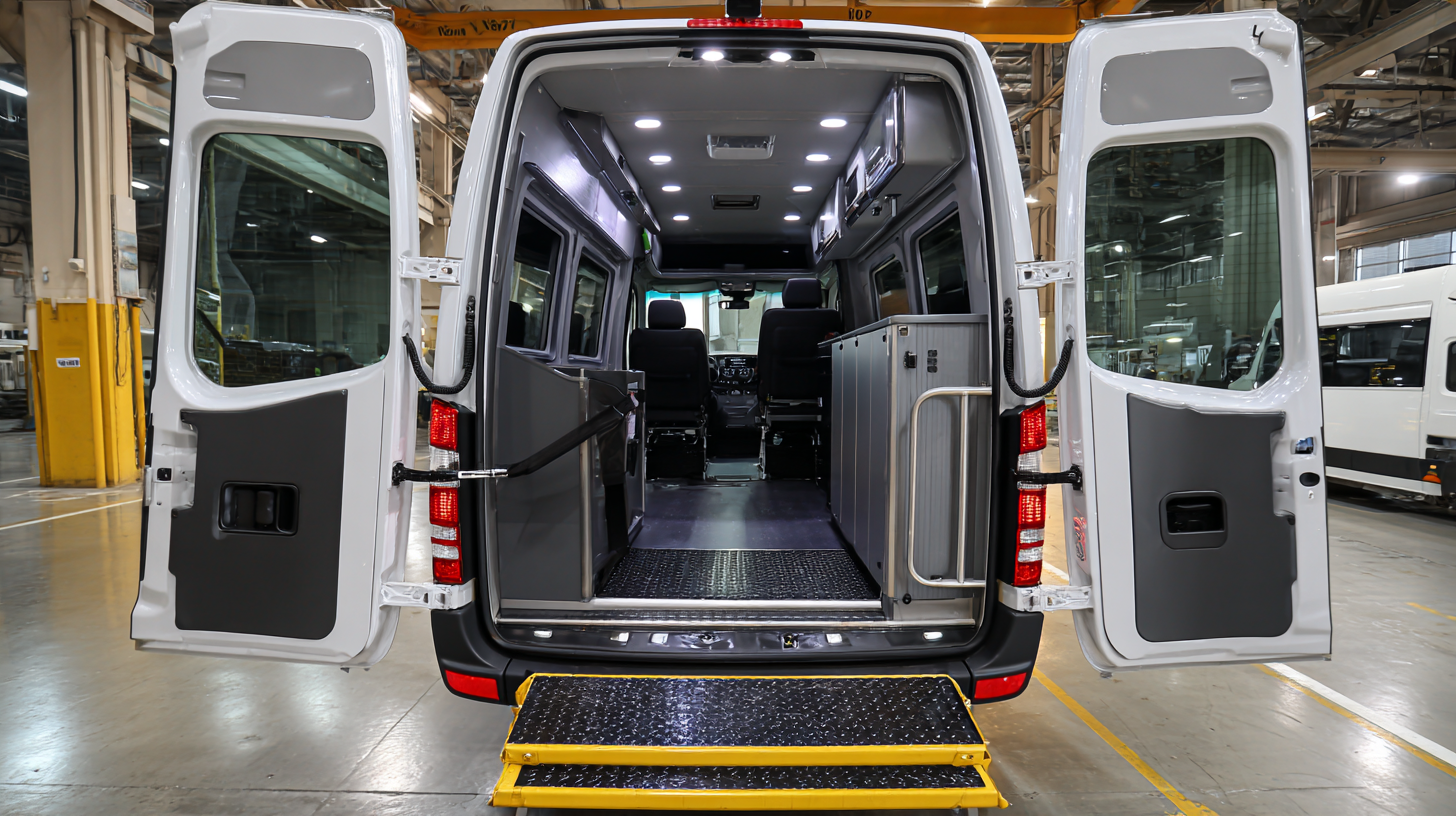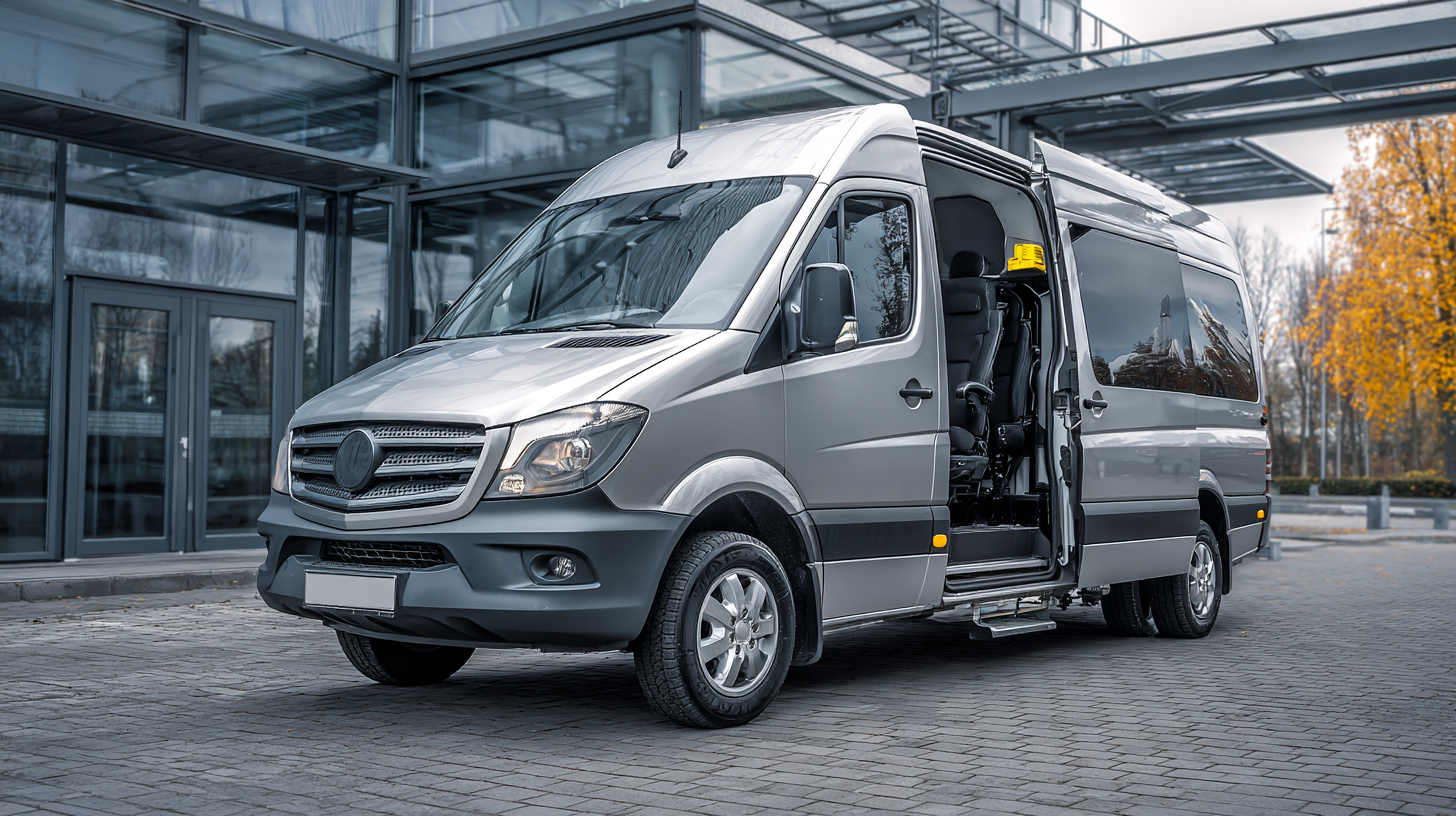Unlocking Global Mobility: Exploring the Leading Export Factory for Best Handicap Van Rentals
In recent years, the demand for accessible transportation solutions has surged, highlighting the essential role of the handicap van rental industry in promoting global mobility. According to a report by Research and Markets, the global wheelchair accessible vehicle market is projected to reach $6.5 billion by 2026, growing at a CAGR of 5.1%. This significant growth is driven by an increasing awareness of the need for inclusivity and independence for individuals with disabilities.
As a leading export factory, manufacturers in China are at the forefront of producing high-quality handicap van rentals that cater to this essential market. By leveraging innovation and adhering to international standards, these manufacturers are not only addressing local needs but also serving a global clientele.
This blog aims to explore the dynamics of this industry, focusing on how superior manufacturing in China is unlocking new possibilities for consistent and reliable handicap van rentals worldwide.
Understanding the Importance of Handicap Van Rentals in Global Mobility Solutions
The significance of handicap van rentals in enhancing global mobility cannot be understated, especially in cities like Fort Wayne, Indiana, which embraces inclusivity for people of all abilities. As a prominent hub for adaptive sports, Fort Wayne showcases the critical role that accessible transportation plays in many people's lives. According to a recent report by the National Aging and Disability Transportation Center, nearly 60% of individuals with disabilities find transportation as the biggest barrier to mobility. Thus, providing high-quality handicap van rentals is essential in creating a supportive environment for these individuals.
Furthermore, the demand for accessible vehicles is on the rise, with projections suggesting that the adaptive vehicle market will reach over $6 billion by 2027. The growth in this sector highlights an increasing awareness of the need for mobility solutions that cater to those with physical challenges. Rental companies that offer handicap vans are crucial in bridging the gap, allowing individuals to participate fully in community activities, including sports and social events. As Fort Wayne continues to promote accessibility, it sets a precedent for other cities to follow, ensuring that everyone has the opportunity to engage and enjoy their surroundings.
Identifying Key Features of Leading Export Factories for Accessible Vehicles
In today's rapidly evolving transportation landscape, the demand for accessible vehicles, particularly handicap vans, has seen significant growth. According to a report by Research and Markets, the global demand for accessible vehicles is projected to reach $80 billion by 2026, reflecting a compound annual growth rate (CAGR) of 7.5% from 2021 to 2026. To meet this demand, leading export factories are focusing on innovative design features that enhance mobility for individuals with disabilities.
Key features of these leading export factories include advanced wheelchair accessibility options, state-of-the-art safety mechanisms, and user-friendly technology integrations. For instance, many factories now offer customizable ramps, automatic sliding doors, and secure wheelchair tie-downs, ensuring both safety and convenience for users. Furthermore, the incorporation of smart features, such as app-controlled van systems and GPS for optimal routing, is becoming increasingly common. A study by the National Mobility Equipment Dealers Association (NMEDA) highlights that vehicles with these enhancements significantly improve the user experience, helping to foster independence among individuals with disabilities.
In the competitive landscape of accessible vehicle manufacturing, adhering to quality and safety standards is crucial. Factories are leveraging ISO certifications and stringent quality controls to guarantee that their products meet regulatory requirements. This focus not only prioritizes the well-being of users but also elevates the credibility of manufacturers in the global market, which is essential as forecasts indicate a rising trend toward inclusive mobility solutions.
Global Mobility: Key Features of Leading Export Factories for Accessible Vehicles
Comparative Analysis: Top Handicap Van Rental Services and Their Unique Offerings
The demand for handicap van rentals has surged in recent years, reflecting a growing recognition of the importance of accessible transportation options. According to a recent industry report, the global market for mobility services is projected to reach $20 billion by 2027, driven by the increasing need for inclusive travel solutions. Among the leading players in this sector, various rental services are making strides with unique offerings that cater specifically to individuals with disabilities.

One notable aspect of these services is the variety of vehicle options available. From accessible vans equipped with ramps and lifts to models that accommodate specialized medical equipment, companies are expanding their fleets to better serve customers. A comparative analysis reveals that some services not only offer wheelchair-accessible vehicles but also provide additional features such as 24/7 customer support and flexible rental terms. This responsiveness to customer needs aligns with broader trends in the ride-hailing industry, where the number of competitors has increased significantly, necessitating a focus on specialized services.
With continuous innovations and improvements, the landscape of handicap van rentals is evolving, ensuring that individuals with disabilities have reliable access to transportation. As more companies enter the market, it will be essential for consumers to assess the unique offerings of each service to find the right fit for their mobility needs.
Exploring Innovative Designs and Technologies in Handicap Van Rentals
In recent years, the mobility industry has witnessed remarkable advancements, particularly in the realm of handicap van rentals. Innovative designs and cutting-edge technologies are reshaping how individuals with disabilities access transportation. From automated ramp systems to adjustable seating configurations, these enhancements ensure that accessibility is at the forefront of the user experience. Companies are increasingly prioritizing user-friendly interfaces, enabling renters to navigate features with ease and confidence.

One notable trend is the integration of smart technology into handicap vans. Features like GPS tracking, advanced safety systems, and real-time diagnostics are becoming standard, providing peace of mind to users and their families. Additionally, eco-friendly options are emerging, catering to a growing demand for sustainable transportation solutions. By combining functionality with technology, these vans are not only meeting essential mobility needs but also elevating the quality of life for users. As the industry continues to evolve, the commitment to innovation will play a crucial role in promoting independence and inclusivity for individuals with disabilities.
The Future of Accessible Transportation: Trends and Opportunities in the Industry
The landscape of accessible transportation is undergoing significant transformation, driven by advancements in technology and shifting societal attitudes towards inclusivity. As cities worldwide recognize the necessity of accessible travel options, the industry is brimming with opportunities to enhance the mobility experience for individuals with disabilities. Trends such as
electric wheelchair vans, enhanced ride-sharing services, and smart technology integration are paving the way for a brighter future in accessible transit.
Moreover, the push towards sustainability is influencing the design and functionality of handicap vans. Manufacturers are now prioritizing electric and hybrid options, decreasing the carbon footprint while providing reliable and accessible transport. The emphasis on user-friendly designs, like easy-entry ramps and adaptable interiors, is further augmenting the experience for users.
The rise of community-focused initiatives also plays a crucial role, with local organizations collaborating with manufacturers to create tailored rental services that address specific mobility challenges faced by individuals in different regions. Together, these trends signify a noteworthy shift towards making transportation more accessible and inclusive for everyone.
